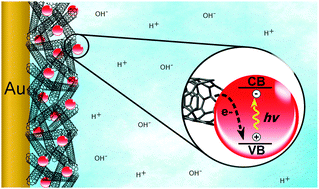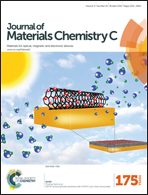SWCNT photocathodes sensitised with InP/ZnS core–shell nanocrystals†
Abstract
Increasing the light harvesting efficiency of photocathodes is an integral part of optimising the future efficiencies of solar technologies. In contrast to the more extensively studied photoanode systems, current state-of-the-art photocathodes are less efficient and are commonly replaced with rare and expensive materials such as platinum group metals. The significance of photocathodes is in the development of tandem electrodes, enhancing the performance of existing devices. Carbon nanotubes are promising candidates for photocathodes, which, in addition to their p-type conductivity and catalytic properties, possess a suite of unique optical and electrical attributes. This work describes the fabrication of single walled carbon nanotube (SWCNT) photocathodes sensitised with indium phosphide/zinc sulfide (InP/ZnS) core–shell nanocrystals (NCs). Under air mass (AM) 1.5 conditions, the sensitisation of SWCNT photocathodes with InP/ZnS NCs increased the photocurrent density by 350% of the unsensitised output. This significant enhancement of current density demonstrates the potential of InP/ZnS NCs as effective sensitisers to improve the performance of carbon-based photocathode thin films.



 Please wait while we load your content...
Please wait while we load your content...